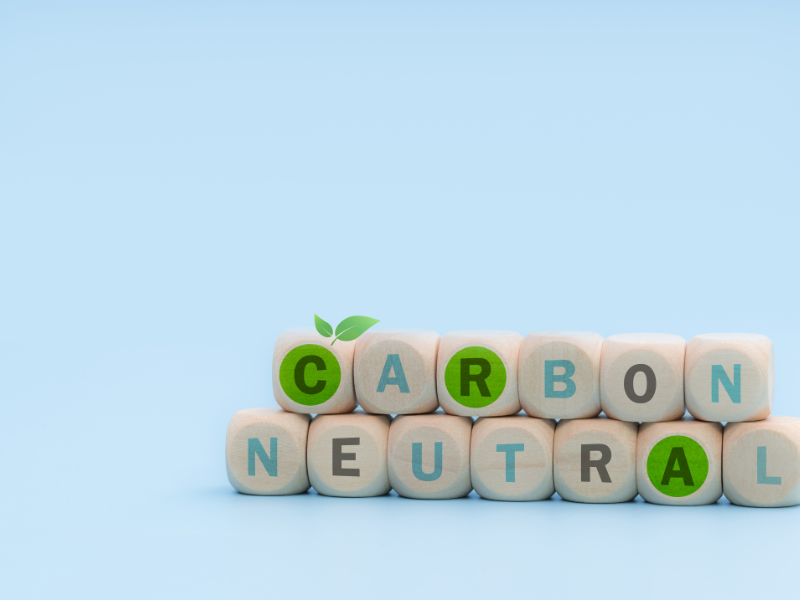Harnessing carbonneutral power options has become an imperative global objective as we strive to combat climate change and transition towards a sustainable future. Carbonneutral power refers to the generation of electricity using methods that have a minimal or zero impact on the environment in terms of greenhouse gas emissions.
This article explores the various types of carbonneutral power options, their advantages and limitations, the comparison with fossil fuel-based power plants, global trends, government policies and incentives, investment opportunities, and the future outlook. By understanding and embracing carbonneutral power options, we can pave the way for a cleaner and greener energy landscape.
Carbonneutral Power Options

Carbonneutral power options encompass a range of technologies and methods that enable the generation of electricity without releasing significant amounts of carbon dioxide and other greenhouse gases. From solar and wind power to biomass and nuclear energy, each option offers unique advantages and challenges. By diversifying our energy portfolio and leaning towards carbonneutral power options, we can reduce our reliance on fossil fuels and mitigate the negative impact of climate change.
What is Carbonneutral Power?
Carbonneutral power refers to the generation of electricity using methods that have a minimal or zero impact on the environment in terms of greenhouse gas emissions. It involves harnessing renewable and clean energy sources such as solar, wind, hydroelectric, geothermal, and biomass, or utilizing nuclear energy, which does not produce carbon emissions during operation. The goal of carbonneutral power is to reduce our carbon footprint and mitigate the effects of climate change by transitioning away from fossil fuel-based power generation.
The Importance of Carbonneutral Power Options

The importance of carbonneutral power options cannot be overstated in our quest for sustainability. Fossil fuel combustion for electricity generation is one of the leading contributors to greenhouse gas emissions, which drive climate change. By embracing carbonneutral power options, we can significantly reduce our carbon footprint and achieve a greener and more sustainable future. Additionally, transitioning towards these options offers numerous benefits, including energy independence, job creation, and economic growth, along with improved air quality and public health.
Different Types of Carbonneutral Power Options

There are several different types of carbonneutral power options that harness renewable energy sources or utilize nuclear energy. Each option has its own unique characteristics, advantages, and limitations. Let’s explore the most prominent ones:
Solar Power
Solar power harnesses the energy from the sun using photovoltaic (PV) cells or solar thermal collectors. PV cells convert sunlight directly into electricity, while solar thermal collectors use the sun’s heat to generate steam that drives a turbine to produce electricity. Solar power is clean, abundant, and readily available in most regions. It is widely recognized as one of the most promising carbonneutral power options.
Wind Power
Wind power harnesses the kinetic energy of the wind to generate electricity. Wind turbines, often seen dotting the landscape, capture the wind’s energy and convert it into rotational motion, which is then transformed into electricity. Wind power is an established and rapidly growing carbonneutral power option, with vast potential for expansion. It offers a renewable and clean energy source that can be harnessed in various regions.
Hydroelectric Power
Hydroelectric power utilizes the gravitational force of falling or flowing water to generate electricity. It involves building dams to create reservoirs and controlling the flow of water to drive turbines, which convert the kinetic energy of the water into electrical energy. Hydroelectric power is a mature and reliable carbonneutral power option, contributing to a significant portion of global electricity generation.
Geothermal Power
Geothermal power taps into the Earth’s heat to generate electricity. It involves utilizing the heat from hot rocks or reservoirs of steam or hot water deep within the Earth’s surface. Geothermal power plants use this heat to drive turbines, producing electricity. Geothermal power is a highly sustainable and carbonneutral option, as it relies on the continuous heat reservoirs beneath the Earth’s surface.
Biomass Power
Biomass power harnesses organic materials such as wood, agricultural residues, and dedicated energy crops to produce electricity. These materials, often referred to as biomass feedstock, are burned or converted into biogas or biofuels to generate heat and electricity. Biomass power can provide a reliable and dispatchable carbonneutral power option, although it requires careful management to ensure sustainable sourcing and the avoidance of environmental impacts.
Nuclear Power
Nuclear power utilizes the process of nuclear fission in which the nucleus of an atom is split, releasing a significant amount of energy. This energy is used to heat water, producing steam that drives turbines connected to generators. Nuclear power is a low-carbon option that offers a high energy density and continuous electricity generation. However, it presents unique challenges related to waste disposal and safety.
Advantages of Carbonneutral Power Options
Carbonneutral power options offer numerous advantages over traditional fossil fuel-based power plants. Let’s delve into some key advantages:
Reduction in Carbon Emissions
The primary advantage of carbonneutral power options is the significant reduction in carbon emissions. By utilizing renewable energy sources or nuclear energy, these options eliminate or minimize the release of greenhouse gases, such as carbon dioxide, into the atmosphere. This reduction in emissions is crucial for mitigating climate change and minimizing the negative impacts on the environment and human health.
Renewable and Sustainable Energy Source
Carbonneutral power options, such as solar, wind, hydroelectric, geothermal, and biomass power, rely on renewable and sustainable energy sources. Renewable energy sources are naturally replenished and can provide an ongoing supply of power without depleting finite resources. Furthermore, these options offer a diversification of energy sources, reducing our dependence on fossil fuels and the geopolitical risks associated with their extraction and transportation.
Job Creation and Economic Growth
Investing in carbonneutral power options can spur job creation and economic growth. These options require significant investment in infrastructure, manufacturing, installation, and maintenance, leading to job opportunities in various sectors. Additionally, the development and expansion of the renewable energy industry contribute to local and global economic growth, attracting investments and fostering innovation.
Energy Independence and Security
Carbonneutral power options promote energy independence and security. By diversifying our energy mix and reducing reliance on imported fossil fuels, countries can become more self-sufficient in meeting their energy needs. This reduces the vulnerability to fluctuations in fossil fuel prices, geopolitical tensions, and supply disruptions. Additionally, renewable energy sources are often available domestically, ensuring a more secure and resilient energy supply.
Low Operational Costs
While there may be initial costs associated with investing in carbonneutral power options, many of these options offer low operational costs in the long run. Once the infrastructure is in place, the fuel source for renewable energy options, such as solar, wind, and hydroelectric power, is essentially free. This leads to stable and predictable electricity prices, mitigating the risks of fuel price volatility associated with fossil fuels.
Challenges and Limitations of Carbonneutral Power Options
While carbonneutral power options offer numerous advantages, they also face certain challenges and limitations. It is essential to consider these factors in order to effectively deploy and integrate these options into the energy mix. Let’s explore some of the key challenges and limitations:
Initial Cost and Infrastructure Investment
One of the primary challenges of carbonneutral power options is the initial cost and infrastructure investment required. Setting up renewable energy plants or nuclear power plants involves significant upfront capital expenditure. While the costs of these options have decreased over time, they still require substantial investments, especially in utility-scale projects. Government policies, incentives, and innovative financing mechanisms can help overcome this challenge and encourage widespread adoption.
Intermittency and Reliability Issues
Many carbonneutral power options, such as solar and wind power, are intermittent in nature. They rely on external factors such as sunlight and wind, which are not constant. This intermittency can pose challenges for grid operators and require the integration of energy storage solutions to balance supply and demand. Furthermore, ensuring the reliability and stability of the grid with a high penetration of intermittent sources can be complex and necessitates advanced grid management strategies.
Environmental Impact and Land Use
Certain carbonneutral power options, such as hydroelectric power, biomass power, and geothermal power, have associated environmental impacts and land use requirements. Hydroelectric power projects can result in the flooding of large areas, leading to the displacement of communities and the alteration of ecosystems. Biomass power requires careful sourcing to avoid deforestation or unsustainable agricultural practices. Geothermal power projects may have geological and seismic considerations. Mitigating these environmental impacts and ensuring sustainable practices is essential for the successful deployment of these options.
Waste Disposal and Safety Concerns
Nuclear power, while offering a low-carbon option, presents unique challenges regarding waste disposal and safety. Radioactive waste produced by nuclear plants requires careful management and long-term storage to prevent environmental contamination. Additionally, ensuring the safety of nuclear power plants and preventing accidents or meltdowns is of utmost importance. Strict regulatory frameworks, robust safety protocols, and ongoing research and development are crucial to address these concerns effectively.
Carbonneutral Power Options vs. Fossil Fuel-Based Power Plants
Comparing carbonneutral power options to fossil fuel-based power plants provides insights into their environmental impact, health implications, and long-term sustainability. Let’s explore some key aspects of this comparison:
Carbon Emissions Comparison
The most significant distinction between carbonneutral power options and fossil fuel-based power plants is the carbon emissions they produce. Fossil fuel-based power plants release significant amounts of carbon dioxide and other greenhouse gases during combustion. In contrast, carbonneutral power options, such as solar, wind, hydroelectric, geothermal, biomass, and nuclear power, have minimal or zero carbon emissions during operation. This reduction in carbon emissions is vital for mitigating climate change.
Air Pollution and Health Impacts
Fossil fuel combustion for power generation contributes to air pollution and poses health risks. Emissions such as sulfur dioxide, nitrogen oxides, particulate matter, and volatile organic compounds can have detrimental effects on human health, leading to respiratory issues, cardiovascular problems, and other adverse impacts. Embracing carbonneutral power options can significantly reduce air pollution, improving air quality, and public health.
Finite Nature of Fossil Fuels
Fossil fuels, such as coal, oil, and natural gas, are finite resources that will eventually run out. As we continue to extract and burn fossil fuels, we deplete these limited resources. In contrast, carbonneutral power options rely on renewable energy sources or utilize nuclear energy, which are not subject to depletion. By transitioning to carbonneutral options, we can ensure a more sustainable and long-term energy supply.
Price Volatility
Fossil fuel prices are subject to volatility due to various factors such as geopolitical tensions, supply disruptions, and fluctuations in demand. This price volatility can have significant economic implications, affecting consumers, businesses, and industries. In contrast, many carbonneutral power options, once the infrastructure is in place, offer stable and predictable electricity prices. This stability provides economic benefits and reduces the vulnerability to fuel price shocks.
Carbonneutral Power Options Around the World
Carbonneutral power options are being deployed and utilized across the globe. Let’s explore the adoption and trends in different regions:
Europe
Europe has been at the forefront of renewable energy adoption and carbon neutrality efforts. Countries such as Germany, Denmark, Sweden, and Spain have made significant investments in wind power, solar power, and biomass power. The European Union has set ambitious targets for carbon neutrality by 2050 and has implemented various policies and incentives to support renewable energy growth.
North America
North America, particularly the United States and Canada, has seen substantial growth in carbonneutral power options. The U.S. has invested heavily in wind power and solar power, with several states leading the way in renewable energy deployment. Canada has vast potential for hydroelectric power and has been harnessing this resource extensively. Both countries are committed to reducing their carbon emissions and transitioning towards cleaner energy sources.
Asia
Asia, with its growing energy demand and population, has been increasingly focusing on carbonneutral power options. China, the world’s largest emitter of carbon dioxide, has made significant investments in solar power, wind power, and hydroelectric power. India has also been rapidly expanding its renewable energy capacity, with a particular emphasis on solar power. Both countries are aiming to reduce their reliance on coal and mitigate the environmental impacts of their energy systems.
Africa
Africa is rich in renewable energy resources, with vast solar potential and significant hydroelectric potential. Countries such as South Africa, Morocco, Kenya, and Ethiopia have been embracing carbonneutral power options to meet their energy demands and drive economic development. The African Union has set ambitious renewable energy targets, recognizing the importance of sustainable and clean energy sources for the continent’s future.
Australia
Australia has abundant renewable energy resources, including solar, wind, and geothermal energy. The country has made significant progress in solar power adoption, with numerous large-scale solar projects. Additionally, wind power is gaining traction, particularly in the southern part of the country. Australia aims to increase its renewable energy capacity and reduce its carbon emissions, aligning with global sustainability goals.
Government Policies and Incentives for Carbonneutral Power
To encourage the adoption of carbonneutral power options, governments around the world have implemented various policies and incentives. Let’s explore some of these:
Renewable Portfolio Standards (RPS)
Renewable Portfolio Standards (RPS) require utilities to obtain a certain percentage of their electricity from renewable sources. These standards vary by jurisdiction and establish targets for renewable energy deployment, providing a market-driven incentive for carbonneutral power options.
Feed-in Tariffs
Feed-in Tariffs guarantee a fixed payment rate for renewable electricity generated by individuals or businesses. This financial incentive encourages the deployment of carbonneutral power options and ensures a return on investment for renewable energy projects.
Tax Credits and Subsidies
Tax credits and subsidies are commonly used mechanisms to promote the adoption of carbonneutral power options. Governments provide financial incentives in the form of tax credits, grants, or subsidies to individuals, businesses, or utilities that invest in renewable energy projects or energy-efficient technologies.
Carbon Pricing and Cap-and-Trade Systems
Carbon pricing involves placing a monetary value on carbon emissions, either through a carbon tax or a cap-and-trade system. These mechanisms create a financial disincentive for carbon-intensive activities and provide an economic advantage for carbonneutral power options.
Investing in Carbonneutral Power Options
Investing in carbonneutral power options offers potential returns on investment and aligns with sustainable investment strategies. Let’s delve into some considerations for investors:
Potential Returns on Investment
Investing in carbonneutral power options can provide attractive returns on investment. As the demand for renewable energy continues to grow and these options become more cost-effective, there are opportunities for financial returns in various sectors, including project development, equipment manufacturing, and renewable energy financing.
Risks and Considerations
As with any investment, there are risks associated with investing in carbonneutral power options. These risks can include regulatory changes, technological advancements, market competition, and project-specific challenges. Careful due diligence, risk assessment, and diversification are important considerations for investors in the renewable energy sector.
Impact Investing and Sustainable Finance
Investing in carbonneutral power options aligns with impact investing and sustainable finance principles. Impact investors seek to generate positive social and environmental impact alongside financial returns. They prioritize investments that contribute to the transition to a low-carbon economy and promote sustainable development.
The Future of Carbonneutral Power Options
The future of carbonneutral power options holds tremendous potential for technological advancements and energy transformation. Let’s explore some aspects that shape the future outlook:
Technology Advancements
Rapid advancements in technology are driving the evolution of carbonneutral power options. Improvements in solar panel efficiency, wind turbine design, energy storage systems, and grid integration technologies are making these options more accessible, reliable, and cost-effective.
Integration with Energy Storage
Energy storage plays a critical role in managing intermittency and ensuring the reliable supply of electricity from carbonneutral power options. Advancements in battery technologies, such as lithium-ion batteries, are enabling the integration of large-scale energy storage systems with renewable energy projects, increasing their flexibility and grid stability.
Decentralization and Grid Resilience
The future of carbonneutral power options involves a shift towards decentralized power generation and enhanced grid resilience. Distributed energy resources, such as rooftop solar panels and community wind farms, empower individuals and communities to become prosumers, producing and consuming their own electricity. Microgrids and smart grid technologies enable the efficient integration of diverse energy sources and enhance the resilience of the energy system.
Electrification of Various Sectors
The decarbonization of various sectors, such as transportation and heating, relies on the electrification of these sectors. Carbonneutral power options, particularly renewable energy sources, can provide the clean electricity needed to power electric vehicles, heat pumps, and other energy-intensive applications, reducing the reliance on fossil fuels and the associated carbon emissions.
Frequently Asked Questions

Can carbonneutral power options meet the energy demands of a growing population?
Yes, carbonneutral power options have the potential to meet the energy demands of a growing population. As technology improves and economies of scale are realized, the capacity of renewable energy sources, such as solar and wind power, continues to increase. Additionally, advancements in energy storage, grid management, and smart technologies enable better integration and utilization of carbonneutral power options on a large scale.
Are carbonneutral power options economically viable?
Yes, carbonneutral power options have become increasingly economically viable. The cost of renewable energy technologies, such as solar panels and wind turbines, has significantly declined over the years. These options offer long-term operational cost savings, stable and predictable electricity prices, and potential returns on investment. Furthermore, government policies, incentives, and market mechanisms have been instrumental in fostering the economic viability of carbonneutral power options.
How do carbonneutral power options contribute to reducing greenhouse gas emissions?
Carbonneutral power options contribute to reducing greenhouse gas emissions by generating electricity without or with minimal carbon dioxide emissions. By harnessing renewable energy sources or utilizing nuclear energy, these options replace fossil fuel-based power generation, which releases significant amounts of carbon dioxide and other greenhouse gases. This reduction in emissions helps mitigate climate change and lessen the environmental impact of electricity generation.
What role does innovation play in improving carbonneutral power options?
Innovation plays a crucial role in improving carbonneutral power options. Technological advancements drive the increased efficiency, scalability, and cost-effectiveness of renewable energy technologies. Innovations in energy storage, grid integration, and smart technologies enable better management and utilization of carbonneutral power options. Additionally, research and development efforts focus on improving the performance, reliability, and safety of these options, contributing to their long-term viability.
Conclusion
Embracing carbonneutral power options is not only necessary to address the challenges of climate change but also offers a path towards a sustainable and prosperous future. The various types of carbonneutral power options, including solar power, wind power, hydroelectric power, geothermal power, biomass power, and nuclear power, provide clean and renewable alternatives to fossil fuel-based power generation.
By investing in these options, governments, businesses, and individuals can significantly reduce carbon emissions, improve air quality, and drive economic growth. It is crucial to overcome the challenges and limitations associated with carbonneutral power options through innovative technologies, supportive policies, and sustainable practices. With continued advancements and increased adoption, carbonneutral power options will play a vital role in shaping a cleaner and greener energy landscape for generations to come.




